Weird animals get all the attention, but the plant kingdom has its own assortment of absurdly weird evolutionary oddities. So read on to meet the plant that eats shrew poo, the orchid that has sex with itself, and the embarrassingly phallic titan arum.
(And contribute your own weird flora favorites in the comments below!)
-
The Unforgettable Titan Arum
Amorphophallus titanum | Sumatra, Indonesia
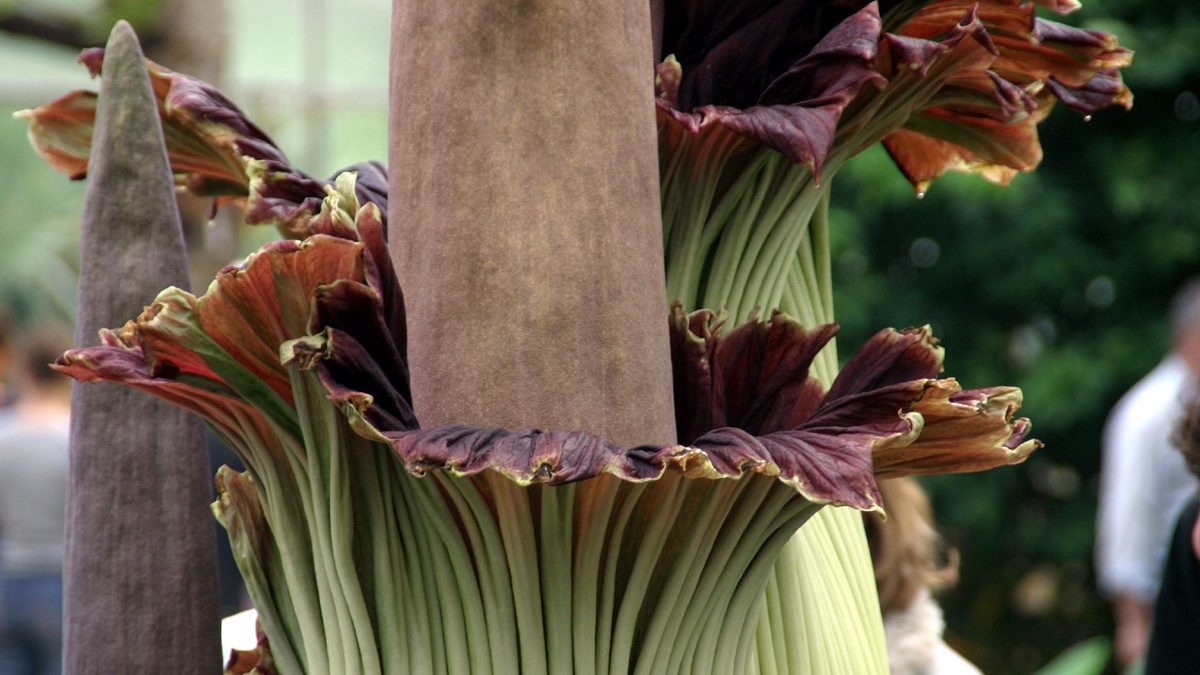
Is that inflorescence in your spathe, or are you just happy to see me? Photo © Elke Wetzig / Wikimedia Commons Meet the titan arum. It’s big, unavoidably phallic, and smells like a weeks-dead skunk. David Attenborough gave the plant its common name, because he felt that a literal translation of Amorphophallus titanum — giant, misshapen phallus — would offend viewers’ delicate sensibilities.
People often liken the scent to decaying meat, which makes sense given that the plant secretes it’s malodorous lure to help attract its insect pollinators — carnivorous insects like dung beetles and flesh flies. The bloom also emits heat to help enhance the hey-look-I’m-a-dead-body ruse.
Despite looking like a giant flower, titan arum is not actually one giant flower. Those maroon flesh-colored bits are a spathe, a leaf-like structure that protects the bloom. And the phallic stalk, or inflorescence, is actually covered in thousands of tiny flowers. The plant’s first bloom takes between 7 and 10 years to grow, reaching whopping 10 to 15 feet in height. But the epic flowering event ends not with a bang, but with a whimper: the entire bloom collapses into a putrid mess after 12 to 48 hours.
-
The Shrew-Poo Pitcher Plant
Nepenthes lowii | Borneo
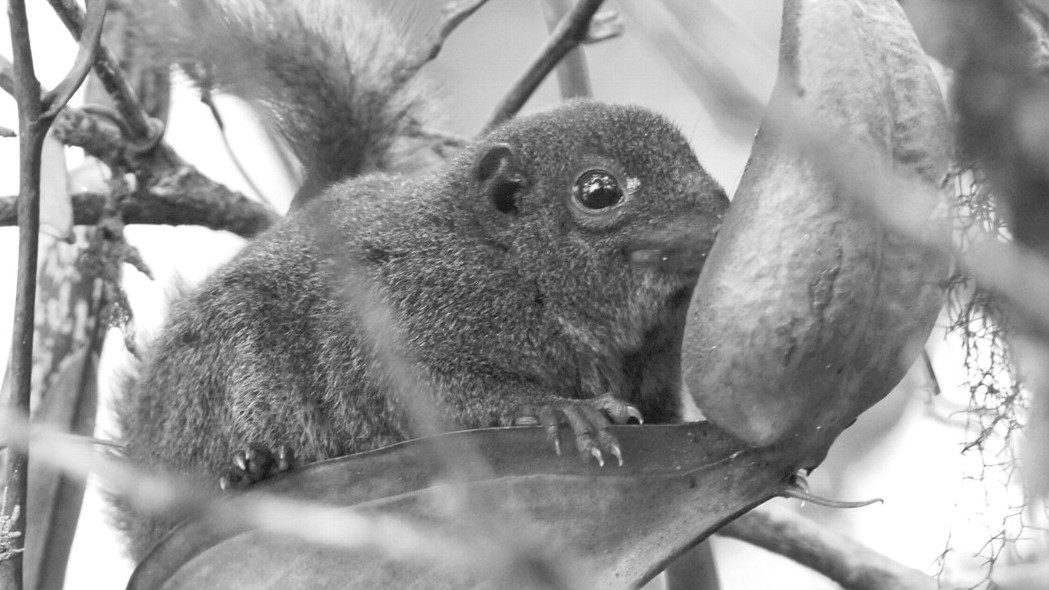
Behold, a tree shrew pooping in a pitcher plant. Photo © Charles M. Clarke, Ulrike Bauer, Ch’ien C. Lee, Andrew A. Tuen, Katja Rembold, Jonathan A. Moran, Tree shrew lavatories: a novel nitrogen sequestration strategy in a tropical pitcher plant., Biology Letters, 2009, 5, 5, 632-635, by permission of the Royal Society. The tropics are full of pitcher plants, but only Nepenthes lowii is full of poo. Yes, shrew poo. Instead of capturing insects, like most pitcher plants, this species evolved to capture the excrement of tree-dwelling mammals and birds, like the mountain treeshrew.
To appreciate the full evolutionary majesty of this plant-o-potty, let’s have a look at the pitcher’s shape. Most pitcher plants have lids that curve down over the opening, further trapping insects and other critters. But instead of acting as a trap, the lids on Nepenthes lowii act as a mammal minibar, secreting a white, sugary substance. As the tree shrews enjoy a tasty snack, they can conveniently perch on the wide, funnel-like opening, which sluices all of their poo right into the pitcher. (Apparently, the shrews even scent-mark their favorite plants by rubbing their sex organs all over the lid.)
But why, exactly would evolution have pushed this particular pitcher plant to be such an exceptional excrement accumulator? Nepenthes lowii is only found on a handful of isolated mountain peaks in Borneo, where soils are nutrient-poor and insects are scarce. Scientists recently discovered that Nepenthes lowii derive between 57 and 100 percent of their nitrogen from the pitcher-caught shrew poo.
You too can watch a shrew poo in this Attenborough-narrated video clip. And Nepenthes lowii isn’t the only pitcher plant to evolve into an animal toilet. Nepenthes rafflesiana elongata, also found in Borneo, has evolved into being the preferred roosting site for Hardwicke’s woolly bats, which piddle into its pitcher as they roost.
-
Yareta, the Old Green Blob
Azorella compacta | Northern Andes

Yes, this blob is really a plant. Photo © Pedro Szekely / Wikimedia Commons Picture the Atacama desert: Endless horizons of pink-red dust and dirt. Minimalist, arid beauty. And waist-high, neon-green blobs.
Those blobs are actually yareta, which grows in Puna grasslands of the high Andes, between 10,500 and 14,800 feet in elevation. Dry, desolate, windy and freezing cold, it’s not an easy place to live. But yet the yareta survives thanks to its bizarre structure, which conserves heat, moisture, and water. The species is an evergreen, with wax-covered leaves and tiny, hermaphroditic pink or purple flowers.
While they may not look like much, these plants are impressive nonetheless. Growing at an excruciatingly slow rate of just 15 milimeters each year, many living yareta are estimated to be more than 3,000 years old. In a familiar story, the species’ slow growth rate is hastening its demise. Yareta is used by local people as a slow-burning fuel, but overharvesting has now landed the species on the endangered list.
-
Trick-turning Tongue Orchids
Cryptostylis spp | Australia
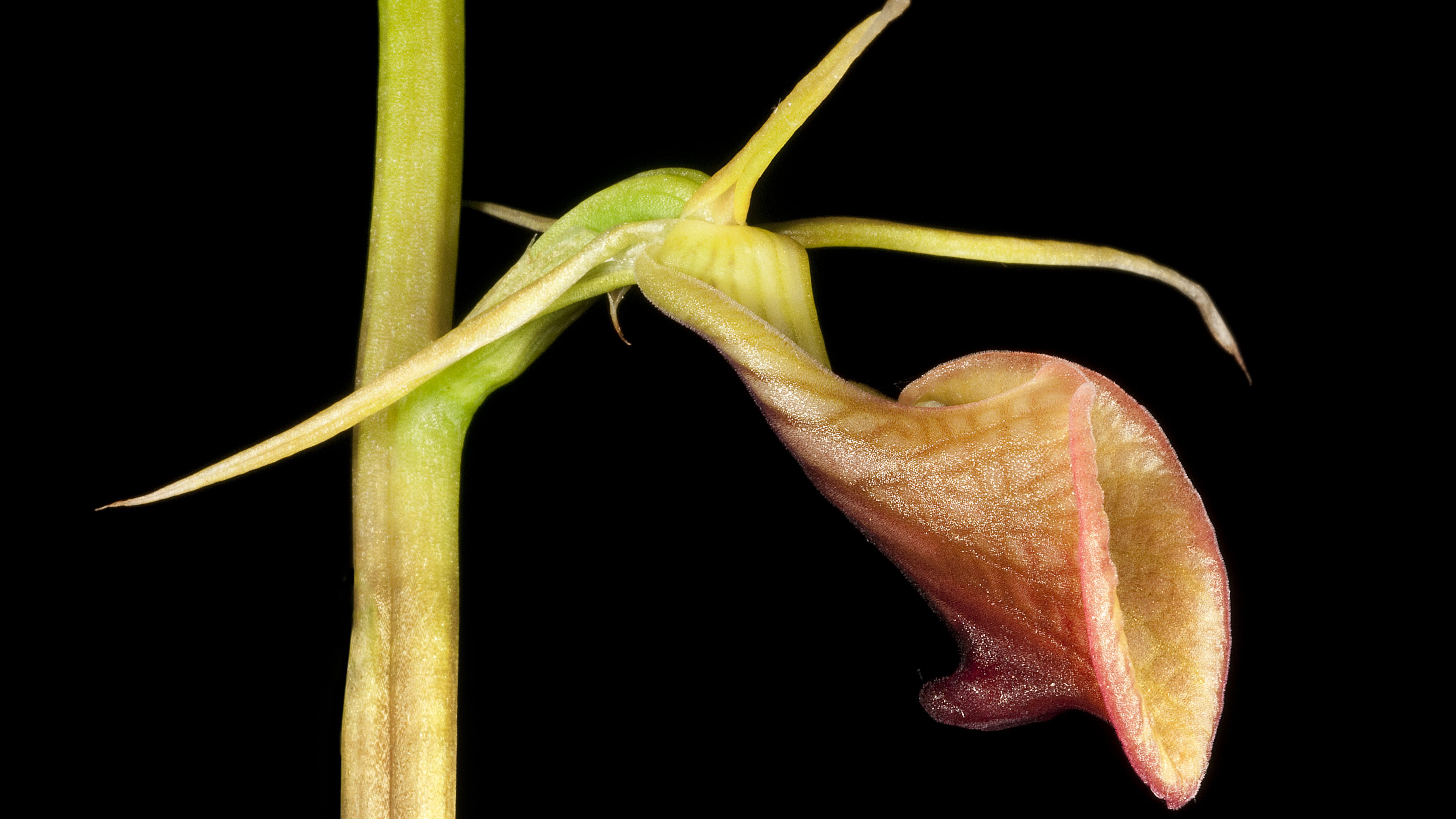
Cryptostylis ovata (not a very sexy wasp). Photo © Kevin Thiele / Wikimedia Commons We once wrote about the weirdness of Australian animals. But apparently even the plants are weird — and dangerous — down under. Orchids are well known for their sexual deviousness; several species turn tricks by evolving flowers that resemble female insects, or even smell like them, which lures male insects in for a closer look, and inevitable pollen-dusting.
But Australia’s tongue orchids take this sexual deception to a whole new level. Their flowers so closely resemble the aptly named female dupe wasps that when the males fly over to investigate, they actually mate with the flower — to the point of ejaculation. (Check out this video to see the wasps in action. And yea we, went there.)
If you’re wondering why, you’re not alone. Scientists suspect that the orchids actually derive an evolutionary benefit from being so successfully sexy. Wasps reproduce by haplodiploidy, which means that female wasps are produced from an egg and a sperm, while male wasps are produced just from an egg. A male wasp that wastes its sperm mating with a flower has less left over for the ladies, meaning more male wasps — aka pollinators — in the next generation.
-
The Self-Pollinating Orchid
Holcoglossum amesianum | China
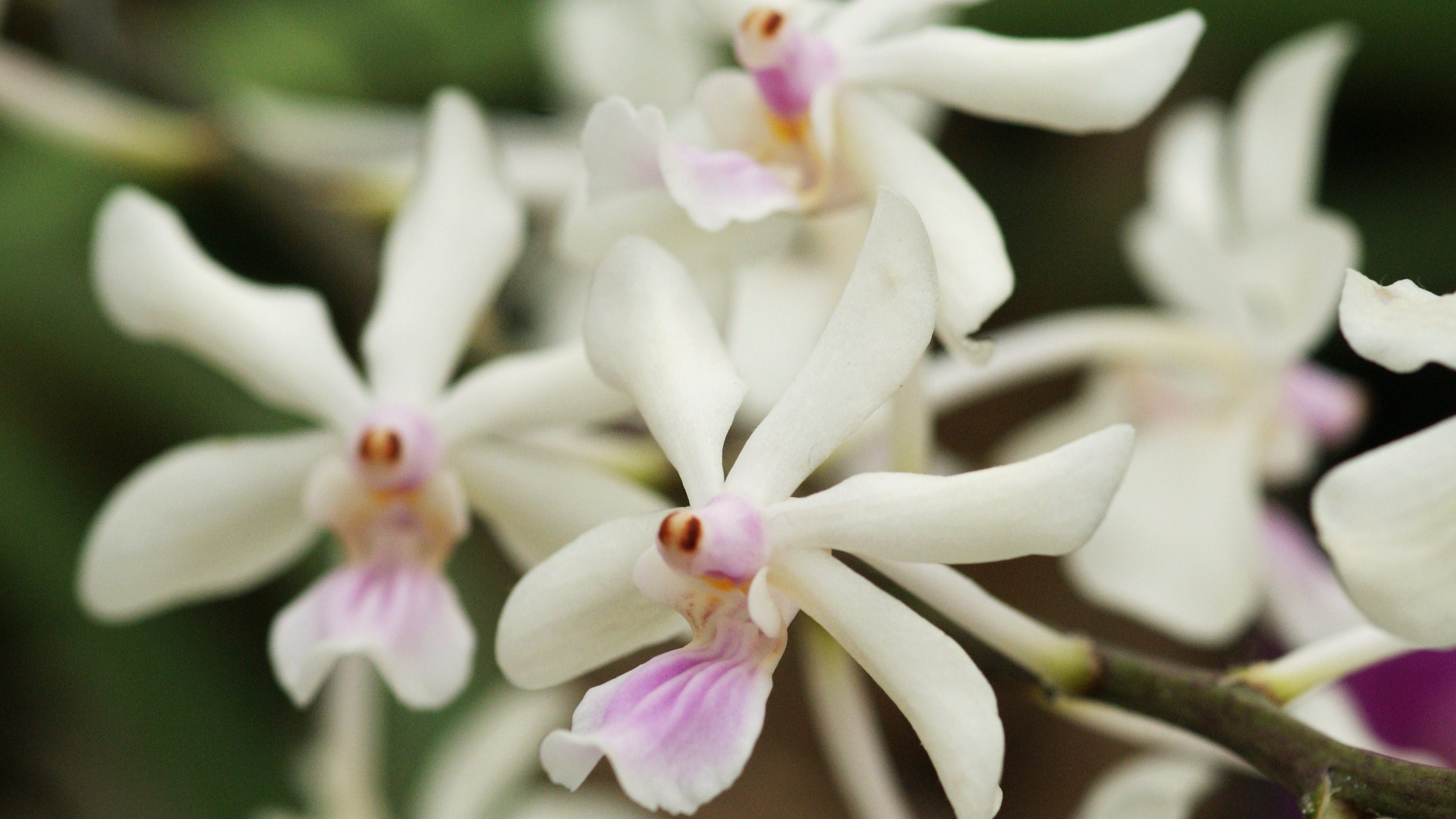
Hey girl. Photo © Elena Gaillard / Wikimedia Commons Meet the flower that has sex with itself. [Insert infinite jokes here.] Found growing on tree trunks in the Yunnan province of China, Holcoglossum amesianum is the one of the few rare flowering plants that pollinates itself, requiring some admirable floral flexibility to do so.
Floral structures evolved to help plants pollinate, typically by distributing pollen from one plant to another by wind, insects and other animals, gravity, or even stick secretions. But this orchid reverts to a different strategy: it twists its pollen-laden male parts, called the anther, a full 360 degrees and inserts them into the female part of the plant, or stigma cavity. The gravity-defying feat is necessary, as the researchers who first discovered this phenomenon observed no insect visitors or wind.
Now that’s just kinky. (Pun intended.)
-
The Infamous Corpseflower
Rafflesia spp | Indonesia, Malaysia, Thailand, Philippines
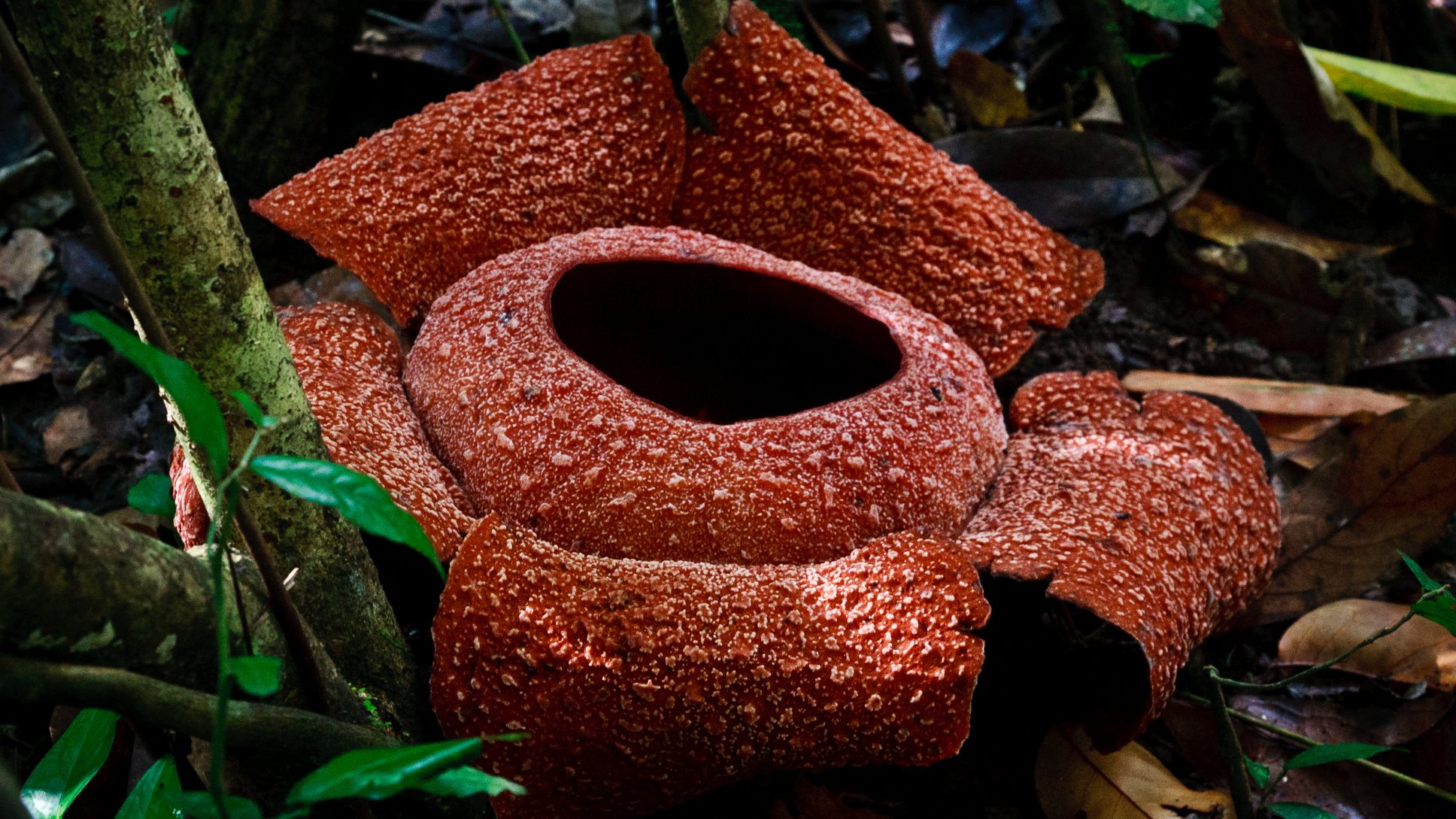
A flower. Sort of. Photo © Benny Weyara Diendasaputra / Wikimedia Commons Titan arum isn’t the only stinker on our list. And the corpseflower smells just as bad as its ominous moniker suggests.
There are nearly 30 Rafflesia species, all distinguished by the slight morphological differences in their flowers. Endemic to the tropics of Southeast Asia, Rafflesia arnoldii boasts the largest single flower in the world (judging by weight). Although the term plant is a little generous, as these floral oddballs lack stems, roots, and leaves. Instead, this parasite grows thread-like strands into the cells of its host plant, several different species of Tetrastigma vine. They’re not even visible until they flower, and the bloom is short-lived.
The meter-wide corpse flowers can take up to 10 months to fully develop in some species, but the bloom lasts for just a few days before decaying into a pile of black slime. During their short bloom they produce a putrid scent — hence the plant’s name — that scientists think evolved to help attract pollinating flies.
-
The Subterranean “Jackal Food” Plant
Hydnora africana | Namibia, South Africa
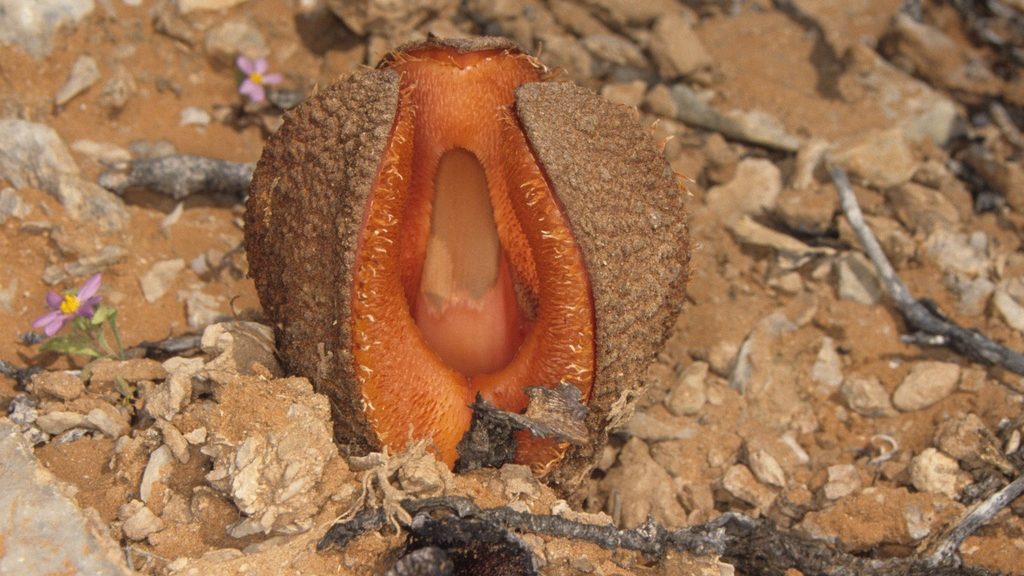
This plant is just plain disturbing. Photo © Derek Keats / Flickr No, we didn’t accidentally include a fictional plant from some twisted, post-apocalyptic version of Avatar. This disturbing plant is 100 percent real.
The jackal food plant is found in the semi-arid Karoo-Nabib ecological region, along the Atlantic coasts of Namibia and South Africa. And judging against what we all learned about plants in Biology 101 (or more like pre-school) jackal food sucks at being a plant. It spends most of its lifecycle underground, and consequently doesn’t have the usual plant bits like stems or leaves. In fact it doesn’t even contain any chlorophyll or photosynthesize. Instead, the parasitic Hydnora africana exists mostly as a root system, with winding tendrils that suck fluids and nutrients from the roots of its host plant, several species in the Euphorbia genus.
Its fleshy flowers — resembling a colorful mutant Pac-Man with bad dental insurance — develop underground and then push through the soil to the surface after sufficient rains. The fleshy lobes emit both heat and a rotting-flesh odor to attract insect pollinators. Local people use the roots for medicinal purposes, and the fruit is a popular food source for birds and small mammals, including — yes, you guessed it — jackals.
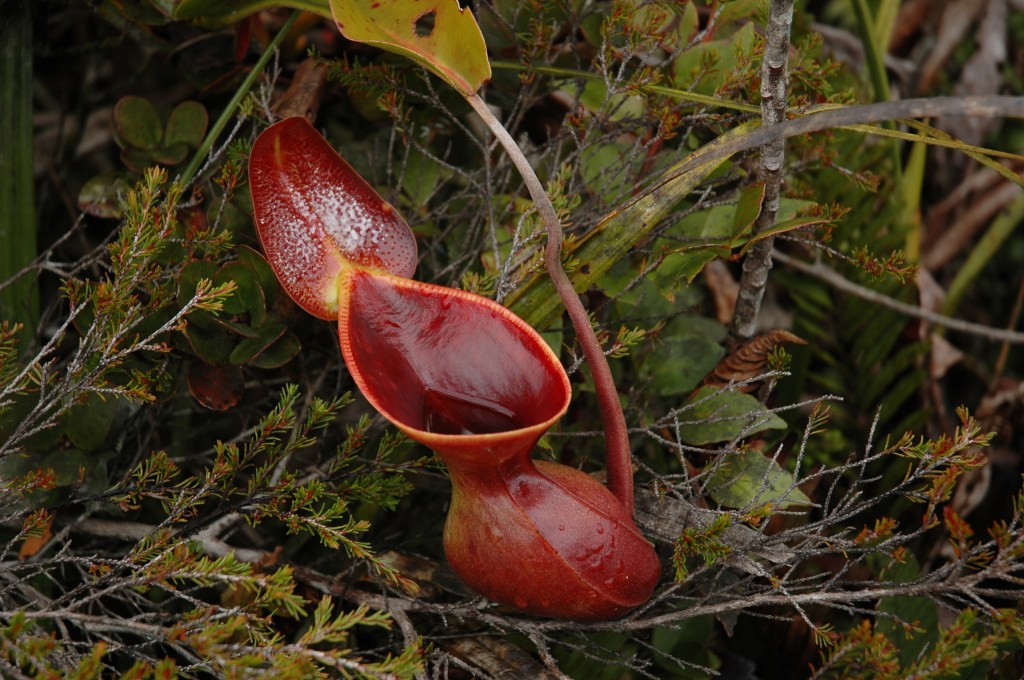



Join the Discussion
3 comments